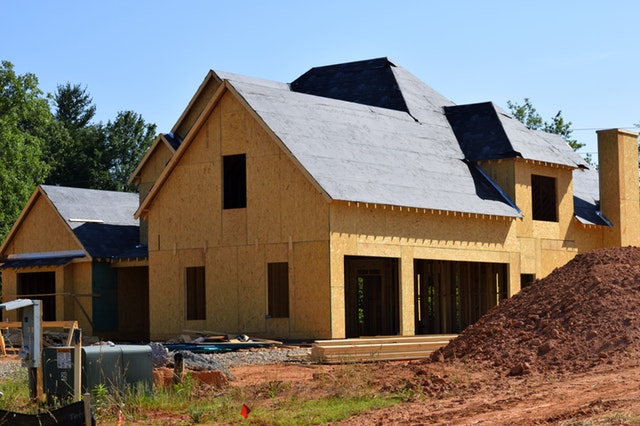 If someone says that they are a “self-made” success who did it all completely by themselves with no help from anyone, they are probably stretching the truth. Success never usually happens in a vacuum. The definition of success is that something is recognized and respected by others.
If someone says that they are a “self-made” success who did it all completely by themselves with no help from anyone, they are probably stretching the truth. Success never usually happens in a vacuum. The definition of success is that something is recognized and respected by others.
Honest business people recognize and appreciate the help that they received from others. They know it was a big part of what made them able to achieve success. Clever people, when they are just starting out in something new, find a mentor. A mentor is a person who is willing to help a new person trying something for the first time.
Why Would Someone Want To Be A Mentor?
If you ask a mentor why are they a mentor, you are very likely to hear a story about how they were helped by another person when they were just starting out. Mentoring is a powerful way to give back. It is rewarding on both sides of the relationship of being a mentor and a mentee. It is so rewarding because both people learn something about themselves by sharing information and experiences with another person.
Mentoring Is Best When It’s A Balanced Relationship
In a healthy mentor/mentee relationship there is a nice give and take that is balanced. The mentor may know much more than the mentee about a subject matter of mutual interest. However, a mentor does not necessarily know everything. A mentee may also have unique experiences to share that the mentor knows nothing about.
Mentorship Is Different From Internship
Having a mentor is different from an internship. Both are meant to be a learning experience, but having a mentor is more about sharing knowledge that includes life skills, whereas an internship is usually limited to job skills.
For example, it is perfectly reasonable to ask your mentor questions like:
- How did you deal with setbacks?
- Did you have self-doubt?
- What kept you from giving up?
The Rules Of Mentorship
There are no specific rules in mentorship. It’s a unique relationship each time based on individual circumstances. The relationship can be as formal or as informal as you like. If the relationship feels strained or uncomfortable for either party, it is time to break it off. The period of a mentor/mentee relationship may come and go; however, sage advice lasts a lifetime.
Finding A Mentor
Many choose a mentor from someone that they already know. One way to meet a mentor is to volunteer for service work in your community. Many times you can make valuable contacts with successful people who are also giving their time and expertise to these projects.
There are also formal mentor programs such as one offered by the Small Business Association. It is called the SCORE program and the services are free.
SCORE is a good program for aspiring entrepreneurs. It can help, if you do not know of anyone who is the kind of mentor you need. Seeking out help through the SBA puts you in touch with an experienced businessperson who is a part of their volunteer mentoring program.
Real Estate Agents Can Be Great Mentors Too
If you are interested in learning about investing in real estate in your local community, a great place to start a mentoring relationship is with a professional real estate agent. Real estate professionals are well versed in the local market and can answer questions and guide you through your transactions to avoid major pitfalls. The best real estate agents can also find special opportunities to bring to investors that they are mentoring and help make your real estate investments more profitable.
Summary
Dale Carnegie wrote his classic self-help book How to Win Friends and Influence People in the 1930s. Carnegie was a great business mentor. He recommends that if you want to be a success in a particular area of life, be around people who are already successful in that area and copy what they do. That advice is still good, even almost ninety years later.
If you are in the market for a new home or interested in listing your current property, be sure to contact your trusted real estate professional.
 Eminent domain is a law that gives the federal, state, county, and municipal governments in the United States the legal right to “condemn” property and then seize it to allow its use for development. Eminent domain is supposed to be used by the government at the various levels to do things for the public benefit, such as to build new roads or construct new public schools.
Eminent domain is a law that gives the federal, state, county, and municipal governments in the United States the legal right to “condemn” property and then seize it to allow its use for development. Eminent domain is supposed to be used by the government at the various levels to do things for the public benefit, such as to build new roads or construct new public schools. The federal government adopted the Housing and Community Development Act in 1977, and the Community Reinvestment Act (CRA) portion was designed to prompt lending institutions to provide mortgages for low- and moderate-income Americans. The underlying reasoning for the CRA was to discourage discriminatory lending practices that inhibited low-income communities and neighborhoods.
The federal government adopted the Housing and Community Development Act in 1977, and the Community Reinvestment Act (CRA) portion was designed to prompt lending institutions to provide mortgages for low- and moderate-income Americans. The underlying reasoning for the CRA was to discourage discriminatory lending practices that inhibited low-income communities and neighborhoods. Last week’s economic reporting included readings from the National Association of Home Builders Housing Market Index, Commerce Department reports on housing starts and building permits issued.
Last week’s economic reporting included readings from the National Association of Home Builders Housing Market Index, Commerce Department reports on housing starts and building permits issued. If you’ve just moved into your new home and you have a pet, you may be thinking of installing a pet door. A pet door is a permanent door feature that is cut into the bottom third of an entry door. Before making a permanent alteration to your door, consider the pros and cons of installing a pet door.
If you’ve just moved into your new home and you have a pet, you may be thinking of installing a pet door. A pet door is a permanent door feature that is cut into the bottom third of an entry door. Before making a permanent alteration to your door, consider the pros and cons of installing a pet door.  Have you ever played the classic board game called Monopoly? The object of the game is to collect all the properties until one winner bankrupts all the other players. The other part of the game is that accumulating properties adjacent to each other increases the value of the individual properties. When a player acquires all the properties of the same color (two or three), then the rents go up and property development can begin.
Have you ever played the classic board game called Monopoly? The object of the game is to collect all the properties until one winner bankrupts all the other players. The other part of the game is that accumulating properties adjacent to each other increases the value of the individual properties. When a player acquires all the properties of the same color (two or three), then the rents go up and property development can begin. Home Builder sentiment rose one point in July according to the National Association of Home Builders Housing Market Index. 2019 builder confidence in housing market condition continued to fall short of 2018 levels. July’s Housing Market Index reading of 65 was one point higher than June’s reading.
Home Builder sentiment rose one point in July according to the National Association of Home Builders Housing Market Index. 2019 builder confidence in housing market condition continued to fall short of 2018 levels. July’s Housing Market Index reading of 65 was one point higher than June’s reading. The most expensive home sold in America, so far, was a New York penthouse that sold for $238 million in January 2019. It is on the top of a building that overlooks Central Park. The 26-story luxury condo building designed by Robert A. M Stern is nearly all sold out.
The most expensive home sold in America, so far, was a New York penthouse that sold for $238 million in January 2019. It is on the top of a building that overlooks Central Park. The 26-story luxury condo building designed by Robert A. M Stern is nearly all sold out. Last week’s economic releases included reports on inflation, core inflation and minutes from the Federal Open Market Committee Meeting held June 18 and 19. Weekly readings on mortgage rates and first-time jobless claims were also released.
Last week’s economic releases included reports on inflation, core inflation and minutes from the Federal Open Market Committee Meeting held June 18 and 19. Weekly readings on mortgage rates and first-time jobless claims were also released. For market value and the comfort of a home’s occupants, home security is just as important as energy-efficiency. Innovation in smart home technology focuses on both of these areas.
For market value and the comfort of a home’s occupants, home security is just as important as energy-efficiency. Innovation in smart home technology focuses on both of these areas.